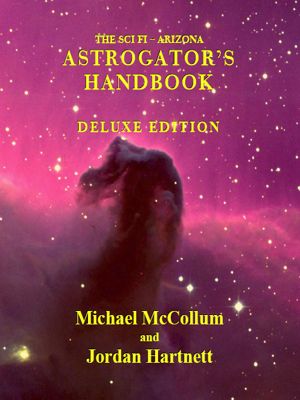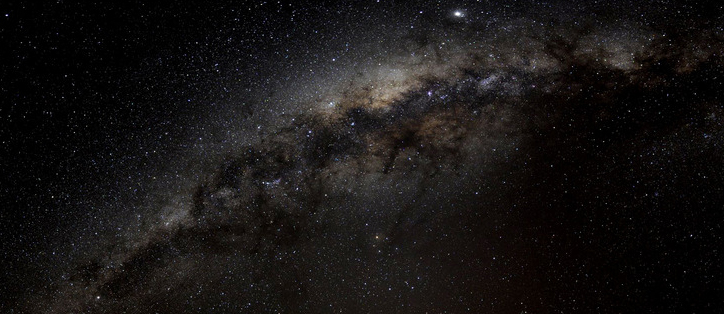ASTROGATION — Literally, guidance by the stars. In SF terminology this is the space equivalent of navigation, and the astrogator is conventionally one of the most important officers on a spaceship. After a jump through hyperspace, perhaps, it is necessary – although less frequently now than in the Golden Age of SF – for the astrogator to identify several stars, usually through spectroscopy, to confirm the craft’s position by triangulation.
The tasks of navigation are to determine your present location and to plan a safe a reliable route to reach your destination. When it comes to interplanetary or interstellar travel, things get complicated. The route through space is greatly affected by means of propulsion, gravitational potential, hazards (like radiation) and obstacles, and time or distance.
From a human perspective stars are very far away from each other, so science fiction writers usually introduce some plot device to work around the space/time problem. Those include but not limited to stargates, FTL drives, warping, wormholes, hyperspace, relays, etc. Some authors choose sub-FTL methods, like generation ships or colony ships, which employ plot elements like cryosleep or any kind of suspended animation en-route.
Whether done by an organic pilot/navigator or an AI, astrogation and the means of travel are major parts of many SF works (think Navigators in DUNE). It’s usually the basis of the whole fictional world network: economy, warfare, etc.
If you need to get into meaty details about how and what astrogators actually do, here’s a really extensive and fun page to turn to: welcome to astrodeck.
Here’s also a book that might be useful to you, whether in writing or RPG or anything else. I’ve bought a copy some years ago and it’s really something a SF author should have on hands, if writing space adventures and all.

This Astrogator’s Handbook is designed with SF writers in mind. It will give you positions of the stars with respect to one another, so you could plot the routes for your fictional spaceships.
The book shows local space as viewed from the vicinity of Polaris, the North Star, using a 3-D layered mapping system that makes it easy to visualize the positions of the stars in the sky and their relationships to one another.
Included in the handbook are:
• 60 pages of instructions and information concerning astronomy.
• 7 overview star maps showing the 3500 stars in a 150 light-year cube centered on Sol.
• 63 quadrant star maps showing the same stars with detailed information such as name, position, and spectral type.
• 120 pages of tables of supporting data giving additional information on each star.
• Indexes and diagrams that make navigating between the maps and tables effortless and intuitive.
• Designed such that the maps can be removed and combined to show a full 150 x 150 x 25 light-year slice of space at a glance.
The preview of maps found inside the book are available on the official book page.

That looks like a really awesome resource. I don’t write interstellar fiction, but all the processes that make it believable on the page are mind-boggling, and I have deep respect for any author that can keep me from questioning their science.
I can’t wait to pick up your boxed #1-3 set of Falaha’s Journey. The cover is awesome, and what a steal! But, I need my new credit card first XD
Alex Hurst, A Fantasy Author in Kyoto
A-Z Blogging in April Participant
I do write interstellar fiction, but I never used astrogation directly in my stories. I like books which do have all that, though.
As for FJ, just so you know, I offer review copies for free. Those are hard to come by for a small author like me.
No, no. I will review, and I will pay. 🙂 I appreciate the offer, but I also believe in supporting indie authors both ways, with reviews, and with income. <3
That is very nice of you. I hope reading my story will be an enjoyable experience. 🙂 I can’t say I can afford buying books, but making/illustrating covers is my specialty. And I’m stupid for not monetizing it. So if you ever need a cover — jut ask. 😀
YOU DREW THAT?! *dies* You need to be monetizing. Seriously! I would love to interview you for my illustrators series! ^_^
I don’t have the health to go into the business. I also need a new PC first, mine is too weak for total graphic badassery. That cover was the last time I actually drew. I still do some vector stuff, but as I said, I’m not in a good health to do A LOT to earn a living. This is also the reason I write slowly. I wrote two full novels in 3.5 years.
Re: Above, since it seems we are out of reply options, haha.
Ahhhh~ got you. Well, that is a very kind offer, then. <3 I will keep it in mind… But, that's not a bad rate for writing novels. I need to get off my butt and finish ONE. Haha.
Har-har. I’ve never had so many nested comments. I’ll fix that option, it is set to 5 here I think.
I finished the first chapter of my new biggie novel today. It was… liberating. I’m off to new adventures. On a planet this time. 🙂
Nice! I have an urban speculative fic bumming around in my head right now… kind of looking forward to starting it. If I can get through my blog reading tonight, definitely going to put some words down tomorrow morning!
I’m doing alien historical novel (that’s not a genre, is it?). 😀 And have fun hopping those blogs. I’ll probably go visit some AZ-ers blogs too, though I’ve quit the challenge. You never know where new friends can be found. 😀
I don’t typically use star charts either–usually because my space operas take place in mythical portions of unknown galaxies we don’t see with vague references to Earth–but that book does look like a handy resource for an upcoming series!
-Raven Oak
(SF/F bestselling author & #AtoZChallenge participant)
http://www.ravenoak.net
Also, have you seen this: https://secure.profantasy.com/products/cos3.asp
I own Fractal Terrains from Profantasy, which is pretty much awesome for planetary maps. For star systems I’d recommend AstroSynthesis.
Good to know! I was hoping you’d used one of their programs. How do you like Fractal Terrains? I’ll definitely check out AstroSynthesis.
FT is quite good, it’s probably the best for quick and detailed terrain map-making for gamers and even for writers. But one thing that I don’t like about it is that its algorithm doesn’t take into account how tectonic plates work — whatever is generated doesn’t look like a real planet. You’ll have to adjust the map manually to make it look more realistic. Other than that it has plenty of detailed world settings to work with. If you know your Earth sciences stuff, it’s a pleasure to play with.